
Capture For Growth



You probably haven’t heard the phrase “flygskam” before. But you might have felt it. The recently coined Swedish term refers to the a shame or embarrassment caused by flying and its effect of the environment.
It’s not an uncommon feeling either, with 23% of people in the country now claiming to have abstained from air travel in the past year to lessen their climate impact. From electric cars to cleaner shipping, transport is undergoing dramatic change. However, aviation is proving more difficult to decarbonise than most forms of transportation.
As airports, cargo and the number of passengers flying every day continues to expand, the need to decarbonise air travel is more pressing than ever if aviation is to avoid becoming a barrier to climate action.
For other transport sectors facing a similar dilemma, electrification has proved a key route forward. Could the electrification of aeroplanes be next?
 Aeroplanes still rely on fossil fuels to provide the huge amount of power needed for take-off. Globally flights produced 859 million tonnes of carbon dioxide (CO2) in 2017. The aviation industry as a whole accounts for 2% of all emissions derived from human activity and 12% of all transport emissions. Despite growing awareness of the contribution CO2 emissions make to causing the climate change emergency, estimates show global air traffic could quadruple by 2050.
Aeroplanes still rely on fossil fuels to provide the huge amount of power needed for take-off. Globally flights produced 859 million tonnes of carbon dioxide (CO2) in 2017. The aviation industry as a whole accounts for 2% of all emissions derived from human activity and 12% of all transport emissions. Despite growing awareness of the contribution CO2 emissions make to causing the climate change emergency, estimates show global air traffic could quadruple by 2050.
Electrification of air travel presents the potential to drastically cut plane emissions, while also offering other benefits. Electric planes could be 50% quieter, with reduced aircraft noise pollution potentially enabling airports to operate around the clock and closer to cities.
Electric planes could also be as much as 10% cheaper for airlines to operate, by eliminating the massive expense of jet fuel, and fewer moving parts making electric motors easier to maintain compared to traditional jets. These cost savings for airlines could be passed on to passengers and businesses needing to move goods in the form of cheaper flights.
But while the benefits are obvious, the pressing question is, how feasible is it?
Start ups are now racing to develop electric planes that will reduce emissions – such Ampaire and Wright Electric. The latter has even partnered with EasyJet to develop electric planes for short-haul routes of around 335-mile distances, which make up a fifth of the budget carrier’s routes.

EasyJet going electric? (Source: easyjet.com)
EasyJet has highlighted London to Amsterdam as a key route they hope Wright Electric’s planes will operate, with potential for other zero-emission flights between London and Belfast, Dublin, Paris and Brussels. The partners aim to have an electric passenger jets on the tarmac by 2027.
Ahead on the runway, however, is Israeli firm Eviation, which recently debuted a prototype for the world’s first commercial all-electric passenger aircraft. Named ‘Alice’ the craft is expected to carry nine passengers for 650 miles and could be up and running as early as 2022.
The challenge these companies face, however, is developing the batteries needed to power electric motors capable of delivering the propulsion needed for a plane full of passengers and luggage to take off. Currently, batteries don’t have anywhere near the energy density of traditional kerosene jet fuel – 60% less.
Alice’s battery is colossal, weighing 3.8 metric tons and accounting for 60% of the plane’s overall weight. By contrast, traditional planes allocate around 30% of total weight to fuel. As conventional jets burn fuel, they get lighter, whereas electric planes would have to carry the same battery weight for the full duration of a flight.
Closer to home, on Scotland’s Orkney Islands, electric planes could be perfectly suited to replace expensive jet fuel on the region’s super-short island hopping service. There’s little need for range-anxiety, with the longest flight, from Kirkwall to North Ronaldsay, lasting just 20 minutes and the shortest taking less than two minutes, between the tiny islands of Papa Westray and neighbouring Westray.
Orkney is already known for its renewable credentials, exporting more wind-generated power to the grid than it is able to consume. The local council plans to investigate retrofitting its eight-seater aircraft, which carried more than 21,000 passengers last year, with electric motors as early as 2022.
The planes currently under development by Ampaire, Wright Electric and Eviation are small aircraft, only capable of short distance flights. This is a long way behind the lengths capable of traditional fossil fuel-powered jets built by airline industry stalwarts, Airbus and Boeing, which are making their own move into electrification.

Ampaire: electric but only for short distances (Source: Ampaire.com)
Even with drastic developments in battery technology, however, Airbus estimates its long-haul A320 airliner, which seats between 100 and 240 passengers, would only be able to fly for a fifth of its range as an electric plane and only manage to carry half its regular cargo load. Elsewhere, French jet engine-maker Safran predicts that full-size, battery-powered commercial aircraft won’t become a reality until 2050 at the earliest.
However, if going fully electric may not yet be possible for large, long-haul planes, hybrid aircraft, which use both conventional and electric power, offer a potential middle ground.
A team comprising Rolls-Royce, Airbus and Siemens are working on a project set to launch in 2021 called E-Fan X, which would combine an electric motor with a BAE 146 aircraft’s jet engine.
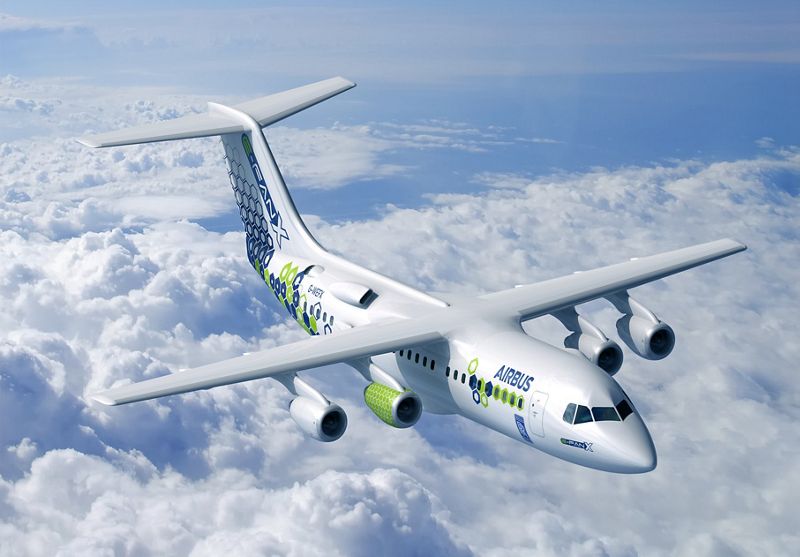
Airbus say they may have to reduce their cargo to go electric (Source: www.airbus.com)
Hybrid models aim to use electric engines as the power source for the energy-intensive take-off and landing processes, saving jet fuel and reducing noise around airports. Then, while the plane is in the air, it would switch to conventional kerosene engines, which are most efficient when the plane reaches cruising altitude. Airbus aims to introduce a hybrid version of their best-selling single-aisle A320 passenger jet by 2035.
While start ups and established jet makers jostle to get electric and hybrid planes off the ground, there are other ideas around reducing aviation emissions.
The University of Illinois is working with NASA to develop hydrogen fuel cells capable of powering all-electric air travel. Hydrogen fuel cells work by combining hydrogen and oxygen to cause a chemical reaction that generates an electric current. While the ingredients are very light, the problem is they are bulky to store, and on planes making effective use of space is key.
Researchers are combatting this by experimenting with cryogenically freezing the gases into liquids which makes them more space-efficient to store, but makes refuelling trickier as airports would need the infrastructure to work with the freezing liquids.
There have also been experiments into solar-powered planes. In 2016, a team of Swiss adventurers succeeded in flying around the world in an aircraft that uses solar panels on its wings to power its propellers. With a wingspan wider than a Boeing 747, but weighing just a fraction of a traditional jet, the Solar Impulse 2 is capable of staying airborne for as long as six days, though only able to carry a lone pilot.
While the feat is impressive the Solar Impulse team says the aim was to showcase the advancement of solar technology, rather than develop solar planes for mainstream usage.
Elsewhere, MIT engineers have been working on the first ever plane with no moving parts in its propulsion system. Instead, the model uses ionic wind – a silent but hugely powerful flow of ions produced aboard the plane. Ionic wind is created when a current is passed between a thick and thin electrode. With enough voltage applied, the air between the electrodes produces thrust capable of propelling a small aircraft steadily during flight. MIT hope that ionic wind systems could be paired with conventional jets to make hybrid planes for a range of uses.

A general blueprint for an MIT plane propelled by ionic wind (Source: MIT Electric Aircraft Initiative, news.mit.edu)
Like any emerging technology, it will take time to develop these alternative power sources to reach the point where they can safely and securely serve the global aviation industry.
However, it’s clear that the transition away from fossil fuels is underway.
Flying as we know it has been slow to adapt, but with a growing awareness and levels of “flygskam” among consumers, there is greater pressure on the industry to decarbonise and lay out positive solutions to cleaner air travel.
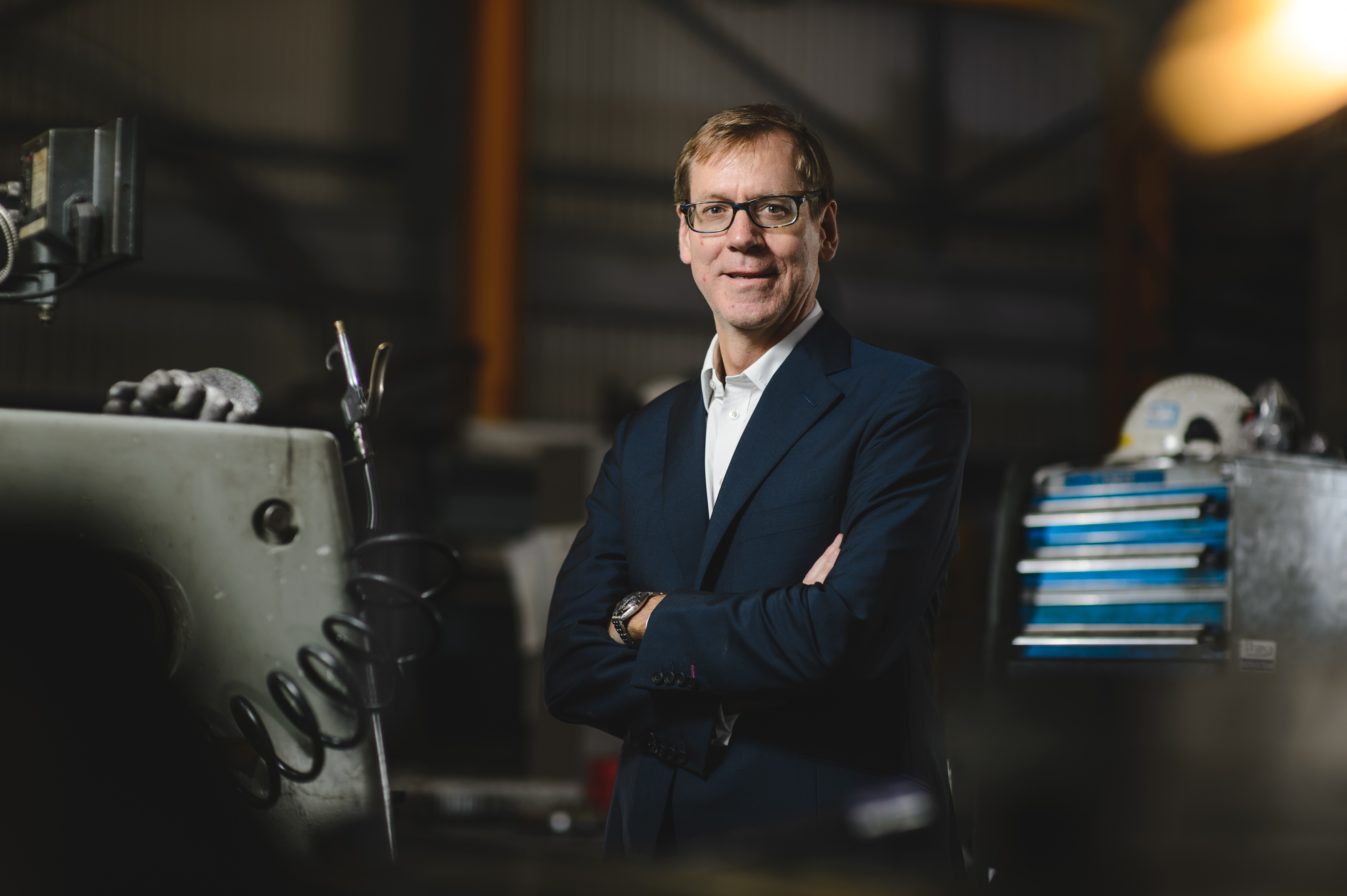
Climate change is the biggest challenge of our time and Drax has a crucial role in tackling it.
All countries around the world need to reduce carbon emissions while at the same time growing their economies. Creating enough clean, secure energy for industry, transport and people’s daily lives has never been more important.
Drax is at the heart of the UK energy system. Recently the UK government committed to delivering a net-zero carbon emissions by 2050 and Drax is equally committed to helping make that possible.
We’ve recently had some questions about what we’re doing and I’d like to set the record straight.
At Drax we’re committed to a zero-carbon, lower-cost energy future.
And we’ve accelerated our efforts to help the UK get off coal by converting our power station to using sustainable biomass. And now we’re the largest decarbonisation project in Europe.
We’re exploring how Drax Power Station can become the anchor to enable revolutionary technologies to capture carbon in the North of England.
And we’re creating more energy stability, so that more wind and solar power can come onto the grid.
And finally, we’re helping our customers take control of their energy – so they can use it more efficiently and spend less.
No. Since 2012 we’ve reduced our CO2 emissions by 84%. In that time, we moved from being western Europe’s largest polluter to being the home of the largest decarbonisation project in Europe.
And we want to do more.
We’ve expanded our operations to include hydro power, storage and natural gas and we’ve continued to bring coal off the system.
By the mid 2020s, our ambition is to create a power station that both generates electricity and removes carbon from the atmosphere at the same time.
Our energy system is changing rapidly as we move to use more wind and solar power.
At the same time, we need new technologies that can operate when the wind is not blowing and the sun is not shining.
A new, more efficient gas plant can fill that gap and help make it possible for the UK to come off coal before the government’s deadline of 2025.
Importantly, if we put new gas in place we need to make sure that there’s a route through for making that zero-carbon over time by being able to capture the CO2 or by converting those power plants into hydrogen.
No.
Sustainable biomass from healthy managed forests is helping decarbonise the UK’s energy system as well as helping to promote healthy forest growth.
Biomass has been a critical element in the UK’s decarbonisation journey. Helping us get off coal much faster than anyone thought possible.
The biomass that we use comes from sustainably managed forests that supply industries like construction. We use residues, like sawdust and waste wood, that other parts of industry don’t use.
We support healthy forests and biodiversity. The biomass that we use is renewable because the forests are growing and continue to capture more carbon than we emit from the power station.
What’s exciting is that this technology enables us to do more. We are piloting carbon capture with bioenergy at the power station. Which could enable us to become the first carbon-negative power station in the world and also the anchor for new zero-carbon cluster across the Humber and the North.
I took this job because Drax has already done a tremendous amount to help fight climate change in the UK. But I also believe passionately that there is more that we can do.
I want to use all of our capabilities to continue fighting climate change.
I also want to make sure that we listen to what everyone else has to say to ensure that we continue to do the right thing.
The £375 million private placement with infrastructure lenders comprises facilities with maturities between 2024 and 2029(2).
The £125 million ESG facility matures in 2022. The facility includes a mechanism that adjusts the margin based on Drax’s carbon emissions against an annual benchmark, recognising Drax’s continued commitment to reducing its carbon emissions as part of its overall purpose of enabling a zero-carbon, lower cost energy future.
Together these facilities extend the Group’s debt maturity profile beyond 2027 and reduce the Group’s overall cost of debt to below 4 percent.
Drax Investor Relations:
Mark Strafford
+44 (0) 1757 612 491
Drax External Communications:
Matt Willey
+44 (0) 7711 376 087
Website: www.drax.com
(1) Drax Corporate Limited drew £550 million under an acquisition bridge facility on 2 January 2019 used to partially fund the acquisition of ScottishPower Generation Limited for initial net consideration of £687 million. £150 million of the acquisition bridge facility was repaid on 16 May 2019.
(2) £122.5 million in 2024, £122.5 million in 2025, £80 million in 2026 and £50 million in 2029.
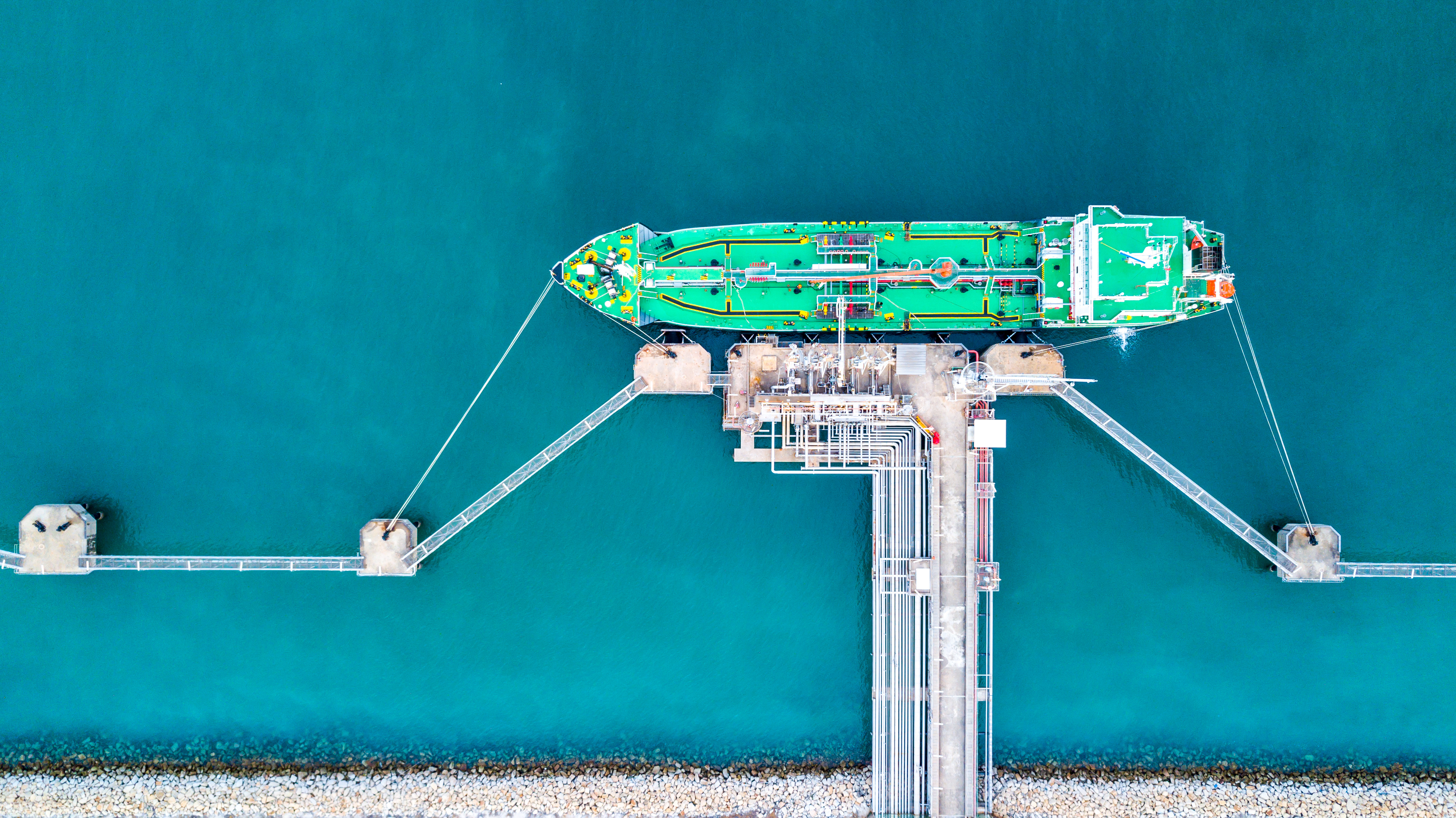
Shipping is widely considered the most efficient form of cargo transport. As a result, it’s the transportation of choice for around 90% of world trade. But even as the most efficient, it still accounts for roughly 3% of global carbon dioxide (CO2) emissions.
This may not sound like much, but it amounts to 1 billion tonnes of CO2 and other greenhouse gases per year – more than the UK’s total emissions output. In fact, if shipping were a country, it would be the sixth largest producer of greenhouse gas (GHG) emissions. And unless there are drastic changes, emissions related to shipping could increase from between 50% and 250% by 2050.

As well as emitting GHGs that directly contribute towards the climate emergency, big ships powered by fossil fuels such as bunker fuel (also known as heavy fuel oil) release other emissions. These include two that can have indirect impacts – sulphur dioxide (SO2) and nitrogen oxides (NOx). Both impact air quality and can have human health and environmental impacts.
As a result, the International Maritime Organization (IMO) is introducing measures that will actively look to force shipping companies to reduce their emissions. In January 2020 it will bring in new rules that dictate all vessels will need to use fuels with a sulphur content of below 0.5%.
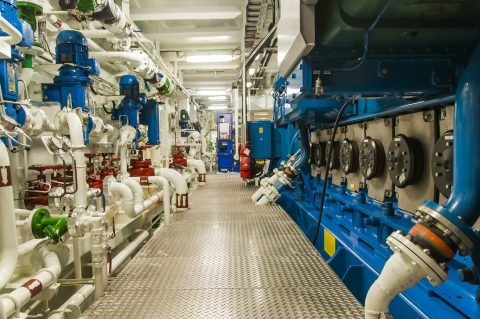
One approach ship owners are taking to meet these targets is to fit ‘scrubbers’– devices which wash exhausts with seawater, turning the sulphur oxides emitted from burning fossil fuel oils into harmless calcium sulphate. But these will only tackle the sulphur problem, and still mean that ships emit CO2.
Another approach is switching to cleaner energy alternatives such as biofuels, batteries or even sails, but the most promising of these based on existing technology is liquefied natural gas, or LNG.
In its liquid form, natural gas can be used as a fuel to power ships, replacing heavy fuel oil, which is more typically used, emissions-heavy and cheaper. But first it needs to be turned into a liquid.
To do this, raw natural gas is purified to separate out all impurities and liquids. This leaves a mixture of mostly methane and some ethane, which is passed through giant refrigerators that cool it to -162oC, in turn shrinking its volume by 600 times.
The end product is a colourless, transparent, non-toxic liquid that’s much easier to store and transport, and can be used to power specially constructed LNG-ready ships, or by ships retrofitted to run on LNG. As well as being versatile, it has the potential to reduce sulphur oxides and nitrogen oxides by 90 to 95%, while emitting 10 to 20% less CO2 than heavier fuel alternatives.

The cost of operating a vessel on LNG is around half that of ultra-low sulphur marine diesel (an alternative fuel option for ships aiming to lower their sulphur output), and it’s also future-proofed in a way that other low-sulphur options are not. As emissions standards become stricter in the coming years, vessels using natural gas would still fall below any threshold.
The industry is starting to take notice. Last year 78 vessels were fitted to run on LNG, the highest annual number to date.
One company that has already embraced the switch to LNG is Estonia’s Graanul Invest. Europe’s largest wood pellet producer and a supplier to Drax Power Station, Graanul is preparing to introduce custom-built vessels that run on LNG by 2020.
The new ships will have the capacity to transport around 9,000 tonnes of compressed wood pellets and Graanul estimates that switching to LNG has the potential to lower its CO2 emissions by 25%, to cut NOx emissions by 85%, and to almost completely eliminate SO2 and particulate matter pollution.
LNG might be leading the charge towards cleaner shipping, but it’s not the only solution on the table. Another potential is using advanced sail technology to harness wind, which helps power large cargo ships. More than just an innovative way to upscale a centuries-old method of navigating the seas, it is one that could potentially be retrofitted to cargo ships and significantly reduce emissions.
Drax is currently taking part in a study with the Smart Green Shipping Alliance, Danish dry bulk cargo transporter Ultrabulk and Humphreys Yacht Design, to assess the possibility of retrofitting innovative sail technology onto one of its ships for importing biomass.
Manufacturers are also looking at battery power as a route to lowering emissions. Last year, boats using battery-fitted technology similar to that used by plug-in cars were developed for use in Norway, Belgium and the Netherlands, while Dutch company Port-Liner are currently building two giant all-electric barges – dubbed ‘Tesla ships’ – that will be powered by battery packs and can carry up to 280 containers.
Then there are projects exploring the use of ammonia (which can be produced from air and water using renewable electricity), and hydrogen fuel cell technology. In short, there are many options on the table, but few that can be implemented quickly, and at scale – two things which are needed by the industry. Judged by these criteria, LNG remains the frontrunner.

There are currently just 125 ships worldwide using LNG, but these numbers are expected to increase by between 400 and 600 by 2020. Given that the world fleet boasts more than 60,000 commercial ships, this remains a drop in the ocean, but with the right support it could be the start of a large scale move towards cleaner waterways.
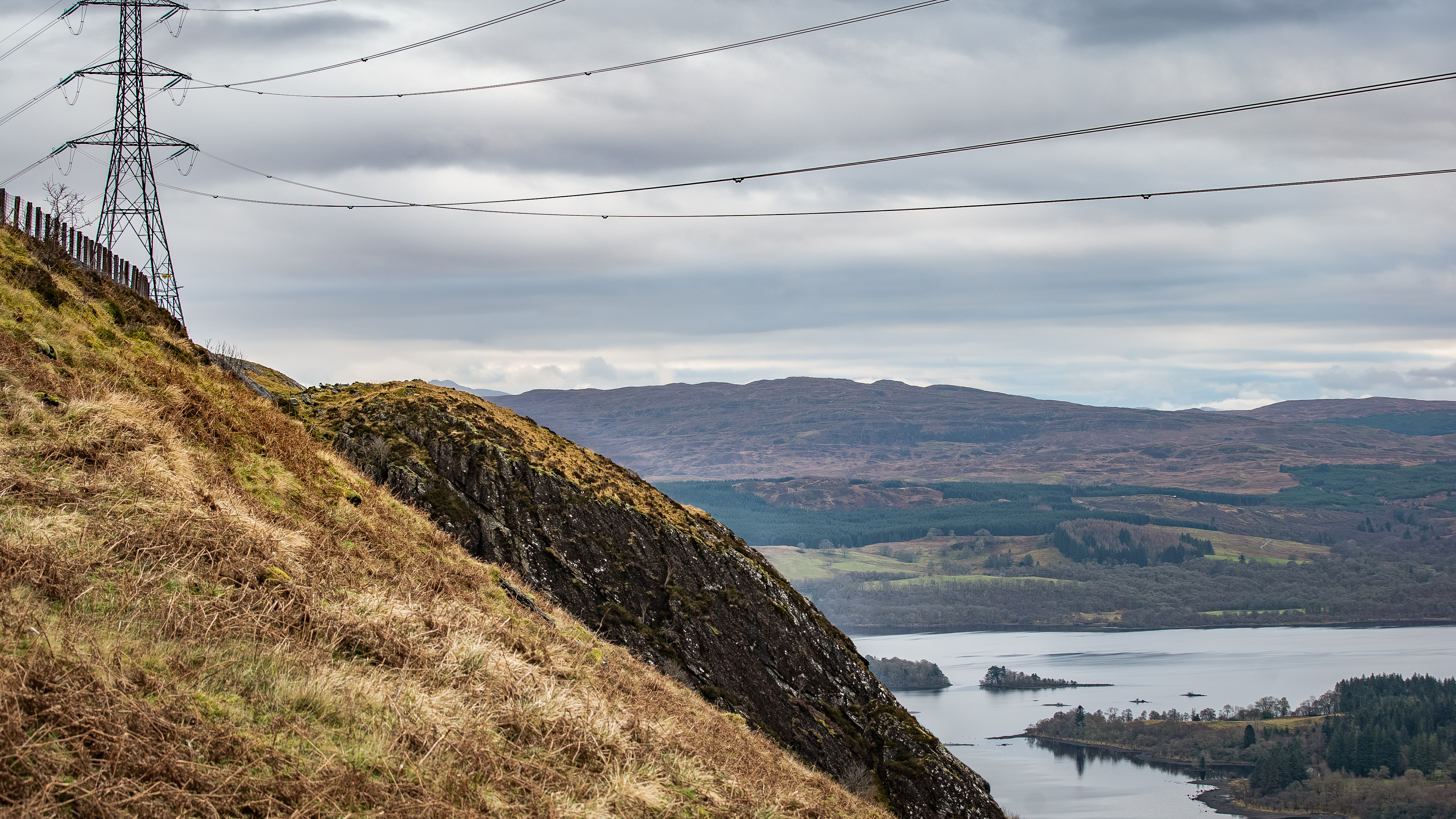
Electricity generation is often tied to a country’s geography, climate and geology. As an island Great Britain’s long coastline makes off-shore wind a key part of its renewable electricity, while Iceland can rely on its geothermal activity as a source of power and heat.
One of the most geographically-influenced sources of electricity is hydropower. A site needs a great enough volume of water flowing through it and the right kind of terrain to construct a dam to harness it. Even more dependent on the landscape is pumped hydro storage.
Pumped storage works by pumping water from one source up a mountain to a higher reservoir and storing it. When the water is released it rushes down the same shafts it was pumped up, spinning a turbine to generate electricity. The advantage of this is being able to store the potential energy of the water and rapidly deliver electricity to plug any gaps in generation, for example when the wind suddenly dropsor when Great Britain instantly requires a lot more power.
This specific type of electricity generation can only function in a specific type of landscape and the Scottish Highlands offers a location that ticks all the boxes.
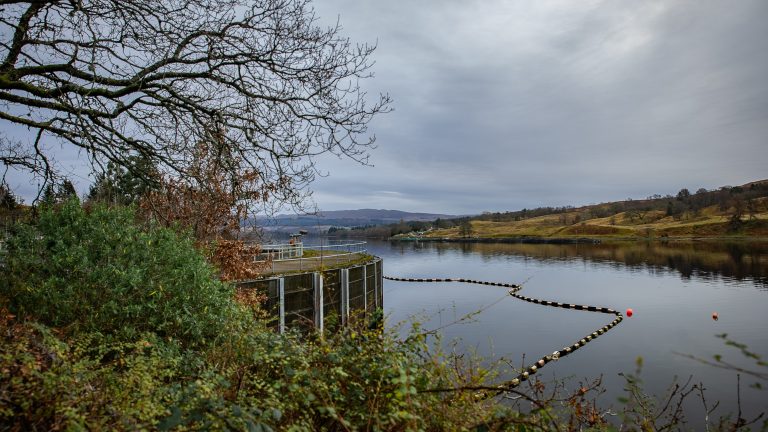
Cruachan Power Station, a pumped hydro facility capable of providing 440 megawatts (MW) of electricity, sits on the banks of Loch Awe in the Highlands, ready to deliver power in just 30 seconds.
“Here there is a minimum distance between the two water sources with a maximum drop,” says Gordon Pirie, Civil Engineer at Cruachan Power Station, “It is an ideal site for pumped storage.”
The challenge in constructing pumped storage is finding a location where two bodies of water are in close proximity but at severely different altitudes.
From the Lochside, the landscape rises at a dramatic angle, to reach 1,126 metres (3,694 feet) above sea level at the summit of Ben Cruachan, the highest peak in the Argyll. The crest of Cruachan Dam sits 400.8 metres (1,315 feet) up the slopes, creating a reservoir in a rocky corrie between ridges. The four 100+ MW turbines, which also act as pumps, lie a kilometre inside the mountain’s rock.
“The horizontal distance and the vertical distance between water sources is what’s called the pipe-to-length ratio,” explains Pirie. “It’s what determines whether or not the site is economically viable for pumped storage.”
The higher water is stored, the more potential energy it holds that can be converted into electricity. However, if the distance between the water sources is too great the amount of electricity consumed pumping water up the mountain becomes too great and too expensive.
The distance between the reservoir and the turbines is also reduced by Cruachan Power Station’s defining feature: the turbine hall cavern one kilometre inside the mountain…
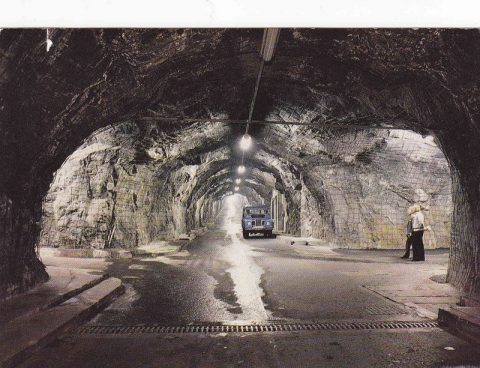 The access tunnel, cavern and the networks of passageways and chambers that make up the power station were all blasted and drilled by a workforce of 1,300 men in the late 1950s to early 1960s, affectionately known as the Tunnel Tigers.
The access tunnel, cavern and the networks of passageways and chambers that make up the power station were all blasted and drilled by a workforce of 1,300 men in the late 1950s to early 1960s, affectionately known as the Tunnel Tigers.
This was dangerous work, however the rock type of the mountainside was another geographic advantage of the region. “It’s the diorite and phyllite rock, essentially granite, so it’s a hard rock, but it’s actually a softer type of granite, and that’s also why Cruachan was chosen as the location,” says Pirie.
The right landscape and geology was essential for establishing a pumped storage station at Cruachan, however, the West Highlands also offer another essential factor for hydropower: an abundance of water.
The West Highlands are one of the wettest parts of Europe, with some areas seeing average annual rain fall of 3,500 millimetres (compared to 500 millimetres in some of the driest parts of the UK). This abundance of water from rainfall, as well as lochs and rivers also contributes to making Cruachan so well-suited to pumped storage.
The Cruachan reservoir can contain more than 10 million cubic metres of water. Most of this is pumped up from Loch Awe, which at 38.5 square kilometres is the third largest fresh-water loch in Scotland. Loch Awe is so big that if Cruachan reservoir was fully released into the loch it would only increase the water level by 20 centimetres.
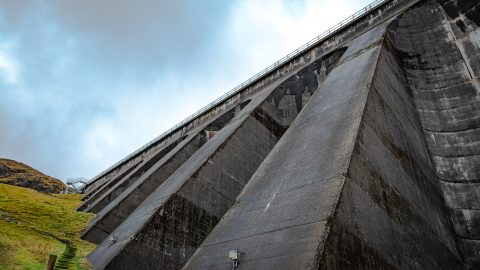 However, the reservoir also makes use of the aqueduct system made up of 19 kilometres of tunnels and pipes that covers 23 square kilometres of the surrounding landscape, diverting rainwater and streams into the reservoir. Calculating quite how much of the reservoir’s water comes from the surrounding area is difficult but estimates put it at around a quarter.
However, the reservoir also makes use of the aqueduct system made up of 19 kilometres of tunnels and pipes that covers 23 square kilometres of the surrounding landscape, diverting rainwater and streams into the reservoir. Calculating quite how much of the reservoir’s water comes from the surrounding area is difficult but estimates put it at around a quarter.
“There are 75 concrete intakes dotted around the hills to gather water and carry it through the aqueducts to the reservoir,” says Pirie. “The smallest intake is about the size of a street drain in the corner of a field and the largest one is about the size of a three-bedroom house.”
Pumped storage stations offer the electricity system a source of extra power quickly but it takes the right combination of geographical features to make it work. Ben Cruachan just so happens to be one of the spots where the landscape makes it possible.
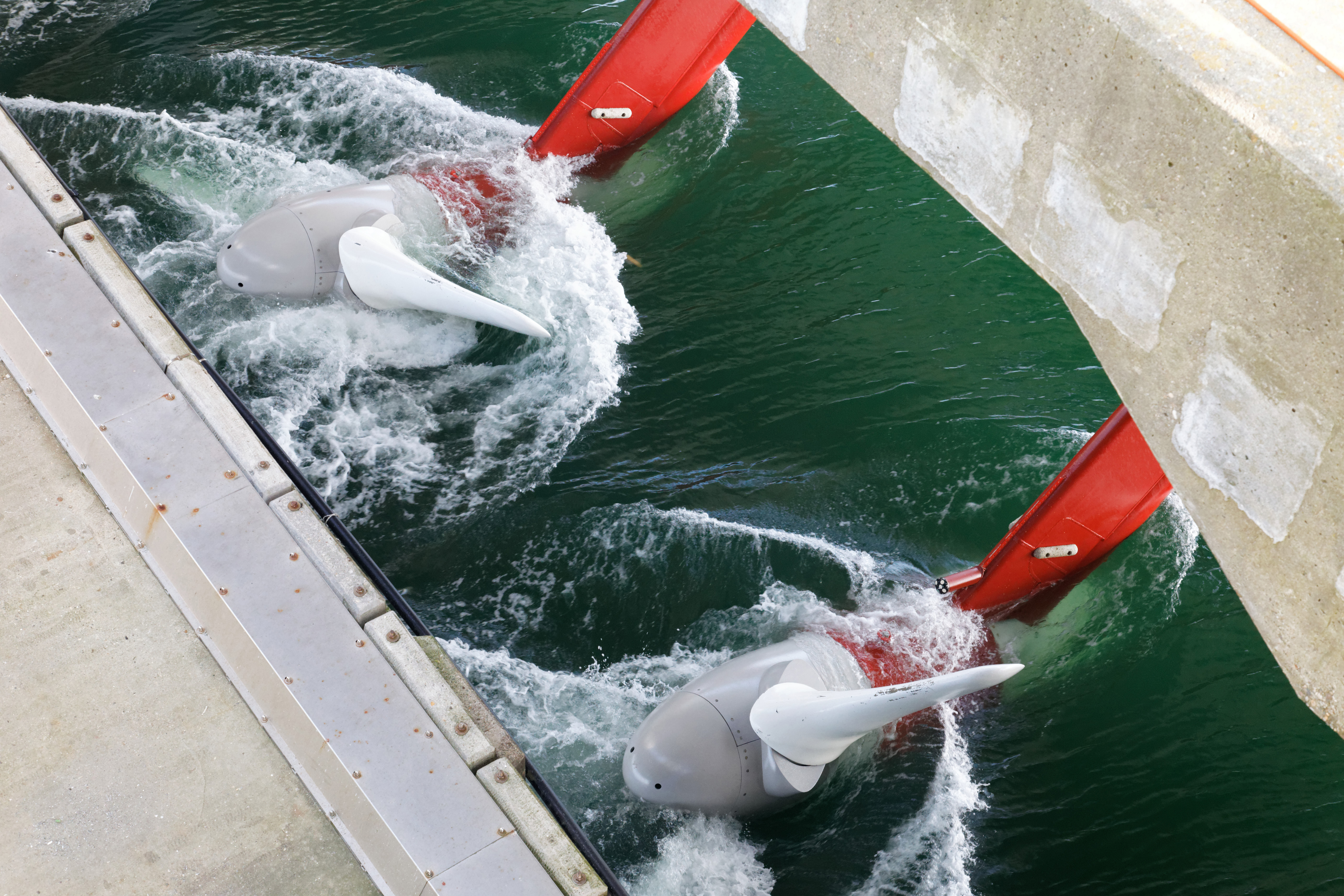
If the spectacular Roman aqueducts that still dot the landscape of Europe tell us anything, it’s that hydraulic engineering is nothing new. For thousands of years water power has been used to grind wheat, saw wood, and even tell the time.

Craigside in Northumberland
By the 19th century, water was able to go beyond performing rudimentary mechanical tasks and generate electricity directly. Cragside in Northumberland, England became the first house powered entirely by hydroelectricity in 1878. By 1881, the whole town of Niagara Falls on the US-Canada border was being powered by the force of its eponymous river and waterfall.
Hydropower has many advantages: it’s predictable, consistent, often zero or low carbon and it can provide a range of ancillary services to power transmission systems. In Great Britain, there is 1.7 gigawatts (GW) of installed hydropower and another 2.8 GW of pumped hydro storage capacity, but it remains a small part of the overall electricity mix. In the fourth quarter of 2018, the 65% of British hydropower that is connected to the national grid accounted for less than one per cent electricity generation or 545,600 megawatt hours (MWh). By contrast, wind accounted for 14% of total generation that quarter (almost 9.5 million MWh).
While hydropower projects can be expensive to construct, operational and maintenance costs are relatively low and they can run for an extremely long time – the Lanark Hydro Electric Scheme in Scotland, which Drax recently acquired, has been producing power since 1927.
Today, hydropower installations are found at all scales, all around the world. But the term hydropower covers many different types of facility. These are some of the ways water is used to generate electricity.
The simplest and most recognisable form of hydropower, impoundment facilities, work by creating a reservoir of trapped water behind a dam that is then selectively released, the water flows through a turbine, spinning it, which in turn activates a generator to produce electricity.
From the Hoover Dam on the Nevada-Arizona border, to the Three Gorges Dam in China – the world’s largest power station of any type, with a generating capacity of 22.5 GW – impoundment dams are some of the most iconic structures in modern engineering.
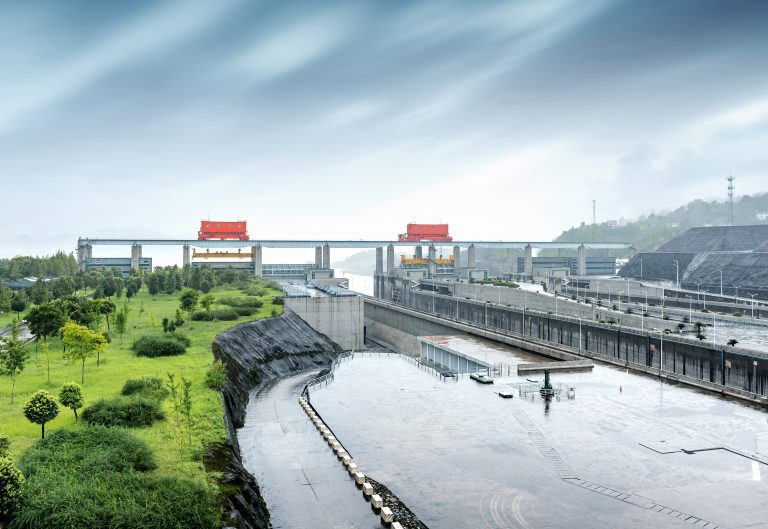
Three Gorges Dam, China
As well as having the potential to provide large quantities of baseload power, they can react extremely quickly to grid demands – just by opening or closing their floodgates as the power system operator requires.
Rather than storing and releasing power from behind a dam, run-of-the-river generators channel off part of a river and use its natural flow to generate power.

Tongland Power Station, Galloway Hydro Scheme
Because it doesn’t require large dams or reservoirs, run-of-river can be less environmentally disruptive, as there is not always a need for large scale construction and flooding is less common.
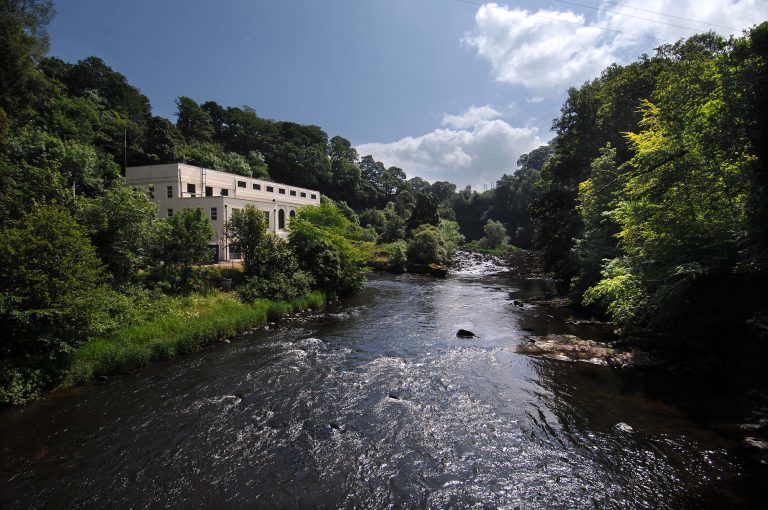
Stonebyres Power Station, Lanark Hydro Scheme
While run-of-river facilities tend to be smaller and less flexible than impoundment, they still have significant generating potential – the Jirau hydro-electric power plant on the Madeira river in Brazil has a generating capacity of 3.7 GW.
Water can also be good for storing energy that can then be converted to electricity. Pumped hydro storage facilities operate by pumping water uphill to a reservoir when electricity is cheap or plentiful, then letting it flow back downhill through tunnels to a series of turbines that activate generators to generate electricity (in the same way as an impoundment dam) when electricity is in high demand.
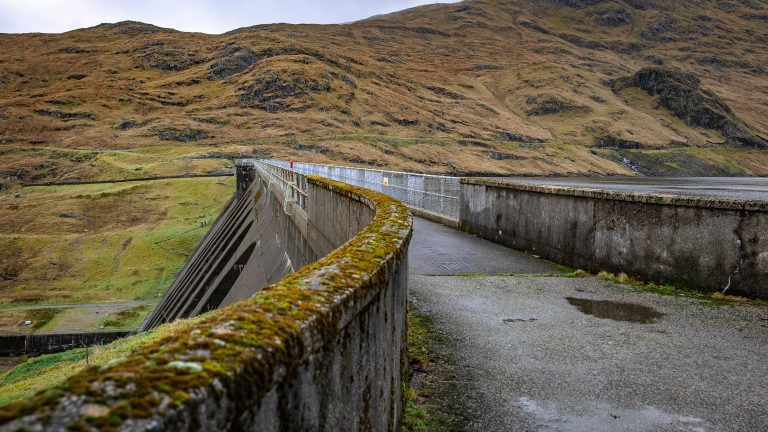
Dam and reservoir, Cruachan Power Station
Their ability to both produce and absorb electricity makes them a vital part of electricity networks, playing the role of energy storage systems. In fact, a massive 97% of all global grid storage capacity is in the form of pumped hydro. Their function as giant batteries will only become more important as intermittent renewable sources like wind and solar become more prevalent in the energy mix.

Outlet and loch, Cruachan Power Station.
So too will their ability to ramp up generation very quickly. Drax’s recently acquired Cruachan Power Station in Scotland can go from zero to 100 MW or more in less than 30 seconds when generation is called upon – for example, when there is a sudden spike in demand.

Swansea Bay
The sea is also an enormous source of potential hydropower. Tidal range generation facilities exploit the movement of water levels between and high and low tide to generate electricity. Tidal dams trap water in bays or estuaries at high tide, creating lagoons. The dam then releases the water as the rest of the tide lowers, allowing it to pass through turbines, generating power.
There are limitations – like wind and solar’s dependence on the wind blowing and the level of sunlight, operators can’t control when tides go in or out. But its vast generating potential means that it could be a valuable source of baseload power if it were to be deployed more widely.
Great Britain in particular has major opportunities for tidal generation. The Severn Estuary between England and Wales has the second highest tidal range in the world (15 metres), and a barrage built across the estuary could have a generating capacity of up to 8.6 GW – enough to meet 6% of the Britain’s total electricity demands. Some environmental groups worry about the impact such projects could have on wildlife.
Due to the level of public funding required, the government rejected that plan in 2010, in favour of pursuing its nuclear policy. A second attempt at securing a government-backed investment contract, known as a CfD, for a smaller 320 MW ‘pathfinder’ project in Swansea Bay was also rejected, in 2018. The Welsh government is however supportive of the project, which already has planning permission.
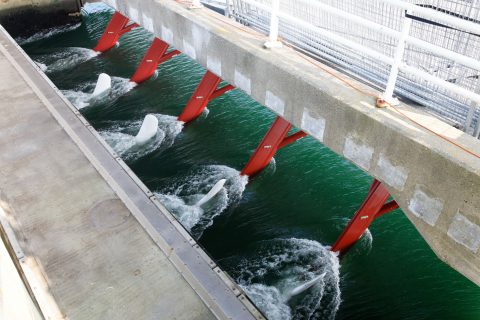
Rather than building a dam, tidal stream generators work like underwater wind turbines. Sturdy propellers or hydrofoils (wing-like blades which oscillate up and down rather than spinning around) are positioned underwater to transform the energy of tidal streams into electricity.
While tidal streams move far slower than wind, the high density of water compared to air means that more power is generated, even at much lower velocities.
Not reliant on large physical structures, tidal stream generators are a relatively cheap form of hydropower to deploy, and make a much smaller impact on their environment than tidal barrages.
Unlike tidal power, which is generated by the gravitational effects of the sun and moon on the Earth’s oceans, wave power ultimately comes from the winds that whip up the ocean’s surface.
There are a number of different methods that turn waves into generation, including funnelling waves into a tube floating on the surface of the water that contains electricity-generating turbines, or by using the vertical bobbing movement of a tethered buoy to pull and spin a fixed generator.
Wave power has yet to be widely implemented, but it has significant potential. It’s estimated that the waves off the coasts of the USA could have provided 66% of the country’s electricity generation needs in 2017 alone. Effectively commercialising wave power could provide another vital tool in developing a sustainable energy landscape for the coming future.
Tidal and wave power generation are less established generation technologies than their land-based cousins but they hold huge potential in delivering more sources of reliable, zero emissions electricity for energy systems in coastal locations around the world.

It’s a free and confidential 24-hour service which offers support on anything from financial stress and family and relationship issues to addiction, housing concerns or legal information. There is a phoneline and an app and users can be referred for six sessions of counselling per issue, per year.
Opus Energy ran 15 voluntary workshops to help our leaders understand the benefits of this service and they were attended by 113 managers.
As a result of Opus Energy’s initiative first launched in 2017 to train Mental Health First Aiders, we now have 20 employees qualified to offer a first line of response across the business. They are available to all employees should they would want to speak with a peer about any mental health issues.
A further 16 employees will train as Mental Health First Aiders in 2019.

Opus Energy opened a pop-up juice bar, the Kinetic Café in London, for two days in August. Small business owners were served free energetic juice and welcomed to network and share their business challenges, advice and personal experiences in Q&A sessions.
We served over 1,000 juices to customers and visitors who stopped by the café over the course of two days.